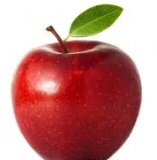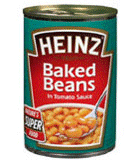|
Foodcounts®
For Kids:
A simple
algorithm
Food-labelling protocols are science-led. They provide an important
reference on nutrition values. However, most consumers are
unfamiliar with nutrition science. The
Foodcounts algorithm converts this data into an optional,
child-friendly source.
·
Converts protein, carbs
and fats into calorie-equivalent values
·
Converts absolute
values into round values
·
Converts these round
values into an average portion value
·
Sum-totals rounded
values as a basis for mnemonic learning
·
Provides exception
reporting on “Good for” and “Bad for” attributes
-----------------------------------------------------------------------------------------------------------------------------------------------------------------------------------------------------------

A simple
algorithm

Key
Features:
1. A tactile learning
experience to encourage a building-block awareness of nutrition
values for everyday foods
2. Presented in
hand-size format, combining the proven principles of flash cards,
playing-cards and collectable cards
3. The card-reverse
depicts nutrition values in the prescribed scheme for national
food-labelling, using the science-led format
4. The front of the
card translates these same values into a simplified,
easier-to-remember arrangement (see algorithm below)
5. Optical
scanning codes, for mobile phones or hand-held scanners, give
optional access to supporting data applications.
6. Two starter packs
(50 cards in each set) will encompass fundamental foods plus popular
processed foods.
7. Extra, smaller
packs will cater for special-order favourites, exotic foods or
recipe foods
EU and UK
food-labelling standards require the presentation of nutrition
values per 100g expressed as absolutes. First, the total
calories in kj and kcals. Then the calorie-generating nutrients of
Protein, Carbohydrates (including sugars) and Fat (including
saturates). And finally the calorie deficient nutrients of Fibre and
Sodium (salt).
This is a
science-driven scheme. The Foodcounts algorithm will convert this
data into a simplified, child-friendly information source.
Three 3 Key facts:
1. There exists a
simple nutrition formula which says that on average:
-
1 gram of protein
= 4 calories
-
1 gram of
carbohydrates = 4 calories
-
1 gram of fat = 9
calories
2. Food
labelling, although expressed as absolute values are not reliable as
such. There are multiple variables which we proved in our submission
to the
House of Commons select committee on calorie comparisons and has
since been further confirmed by
more influential commentary and later given popular
coverage in the Daily Mail Therefore rounding up/down of values
is legitimate
3. The normal or
average portion of consumed foods will rarely be 100 grams.
See the algorithm (apples and beans visuals below)
Protein (per 100
grams) x 4 x average portion (gram factor) =
Simplified Protein Value expressed as a calorie equivalent
Plus +
Carbs (per
100grams) x 4 x average portion (gram factor) =
Simplified Carbs Value expressed as a calorie equivalent
Plus +
Fats (per 100grams)
x 7 x average portion (gram factor) = Simplified
Fats Value expressed as a calorie equivalent
Equals = Simplified total
calorie value per food item or food portion (check against prime
calorie source)
The algorithm is completed
by exception reporting of non-calorie nutrients including of fibre,
salt, vitamins etc
|






